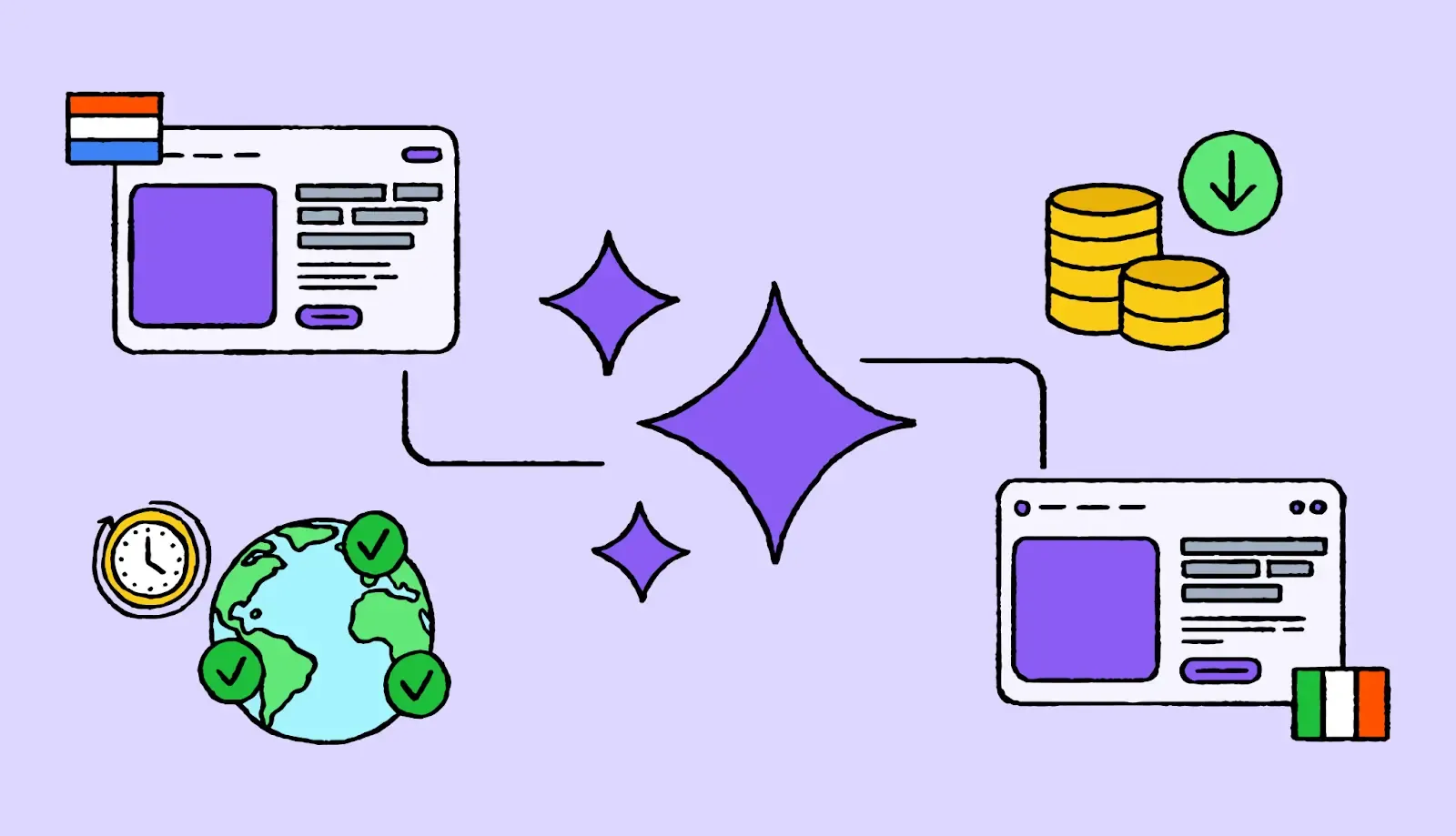Integrations spotlight: Contentful, Contentstack, Vercel
Contentful, Contentstack, and Vercel are some of the key Lokalise integrations that help offload localization tasks from developers. Here’s how they work.
Headless CMS localization
Headless CMS platforms like Contentful and Contentstack sit at the center of modern digital experience stacks. Unlike traditional CMSs, they don’t dictate how content gets displayed. Instead, they deliver structured content through APIs so teams can push it anywhere (websites, apps, chatbots, or even IoT devices).
This flexibility makes them ideal for global brands that need to deliver consistent, personalized experiences across multiple channels and markets. But content only scales globally if it can be localized quickly.
That’s where Lokalise comes in.
Contentful
With the native Contentful app, teams can sync content to and from Lokalise automatically.
- Updated copy in Contentful moves straight into the translation workflow
- Completed translations flow back without anyone exporting or re-uploading files
You can also embed translation capabilities directly inside the Contentful editor. This means a content manager writing new product descriptions can request translations from the same interface they use every day. That’s agile content marketing for you. No need to bother devs about it.
Contentstack
The same model applies to Contentstack. Instead of relying on developers to manage keys and files, marketing and content teams can handle localization themselves.
They trigger workflows directly from the CMS, monitor progress, and publish the localized content as soon as it’s ready. This results in faster campaign launches and a tighter feedback loop across markets.
Deployment + localization with Vercel
Vercel is a front-end cloud platform best known for powering Next.js and enabling teams to deploy web applications instantly, at scale. It’s designed for speed. Developers push code, and Vercel handles builds, previews, and global delivery automatically.
For organizations rolling out digital experiences across multiple markets, Vercel makes it possible to move from code commit to live deployment in seconds.But speed loses its edge if localized content can’t keep up.
Without automation, translations often lag behind deployments, forcing developers to patch updates manually or delay launches until every language version is ready. That gap creates friction for both users and engineering teams.
How Lokalise and Vercel work together
Lokalise closes that gap by treating translations as a first-class asset in the deployment process.
With a translation pipeline built on Vercel, uploads and downloads happen automatically:
- New content is pushed into Lokalise
- Translations get completed inside lokalise
- Localized versions flow straight back into the codebase
When the next build runs, translations are deployed alongside the product. Again, there’s no extra steps and no need for developer intervention.
In practice, this means that when a developer merges a feature branch, the English, German, or Japanese versions are all ready to go live together. Localization isn’t a post-deployment chore, but a part of the same automated pipeline that delivers your product.





